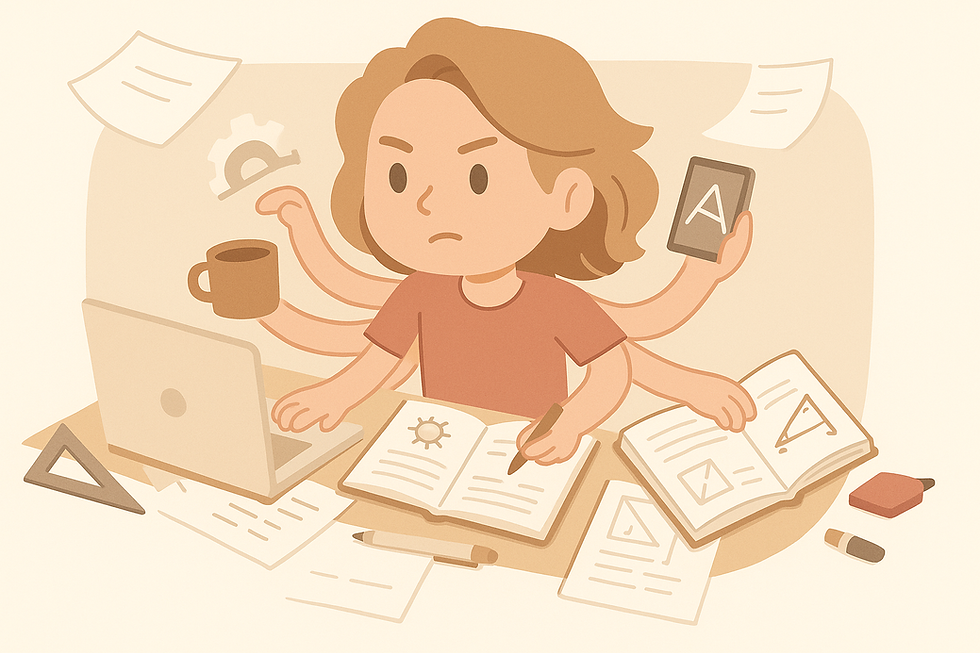Why Can’t My Child Focus? -- Common Attention Issues in Children and 6 Types of Attention
- FLourish Speech Pathology Services

- Oct 31
- 3 min read
“I keep repeating myself, but he’s not listening.”
“She can’t sit still to finish a snack, let alone homework.”
“He starts something but walks off halfway.” If any of these sound familiar, you’re not alone — attention challenges are one of the most common concerns parents and teachers raise. But before assuming a child is simply “not trying,” it’s helpful to understand that attention isn’t just one skill. In fact, there are six different types of attention — and each plays a unique role in helping children learn, behave, and connect with others.
🧠 The 6 Types of Attention
Focused Attention The ability to respond to a single stimulus — like turning to look when someone calls their name. It’s the foundation of all other attention skills. Common issues include the child struggling to notice or respond to a single cue, such as responding to their name without being called multiple times or following instructions.

Sustained Attention The ability to stay on one task over time. This is what helps a child finish a puzzle or listen to a full story.
Common issues could include always leaving a task incomplete, seeking movement, or losing patience easily.

Selective Attention
The ability to filter out distractions and zero in on what matters — like listening to the teacher even when friends are talking nearby.
Common issues include struggling to work in a busy, noisy environment, being curious about everything, and easily becoming overstimulated.

Alternating Attention
The skill of switching back and forth between tasks — such as copying from the whiteboard while remembering what you were writing.
The common presentation is that these children often appear "distracted" or "forgetful", for example, forgetting what they just saw on the whiteboard when switching back to their notebook during classroom copying, experiencing disruptions when having conversations, etc.

Divided Attention
The ability to manage two streams of information at once — like listening to the teacher while jotting notes, playing pianos and tracking the piano scores.
These children perform well on one task but struggle with multitasking, becoming easily overloaded or slow to respond.

Joint Attention
The ability to share focus with someone else — for example, following a parent’s point or gaze to look at an object. This is a key early social skill and is often delayed in children with autism.
Common issues could include the child not following where I point or sharing an interest in objects.

In real life, these systems work together. If a child’s sensory system is out of sync or their emotions are dysregulated, their brain isn’t ready to attend. That’s why attention strategies often need to address more than just “sitting still” or “trying harder.” (We’ll dive deeper into this in an upcoming blog.)
💡 What Can Parents and Teachers Do?
Observe your child in different settings: When do they focus best? When do they switch off?
Look beyond behavior: Could sensory triggers, emotional stress, or lack of interest be making focus harder?
Use playful strategies that match your child’s developmental level — games like “Simon Says” or short movement breaks can go a long way.
Don’t wait — even toddlers and preschoolers can begin developing better attention foundations through everyday activities and routines.
📥 Get Your Free Factsheet: 6 Types of Attention + Training Focus
Want a simple, printable guide to understand all six types of attention and what to do for each one?
Download my free 6 Types of Attention and Training Focus placemat — perfect for home, classroom, or therapy settings. It’s a great starting point to help your child build stronger focus skills… and feel more confident along the way.










Comments